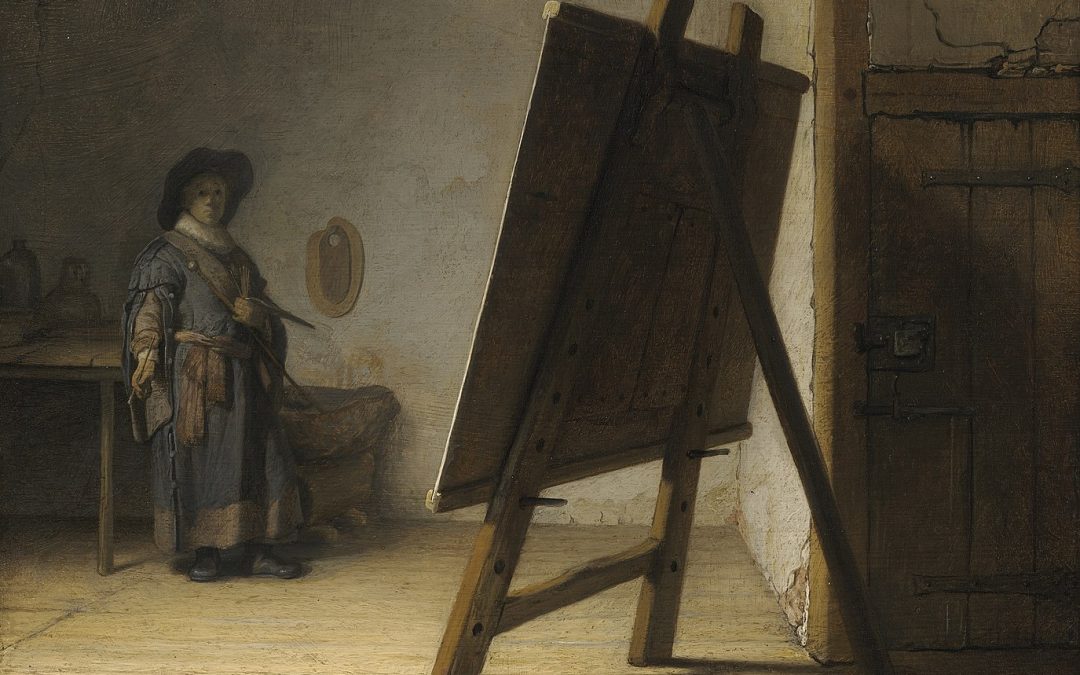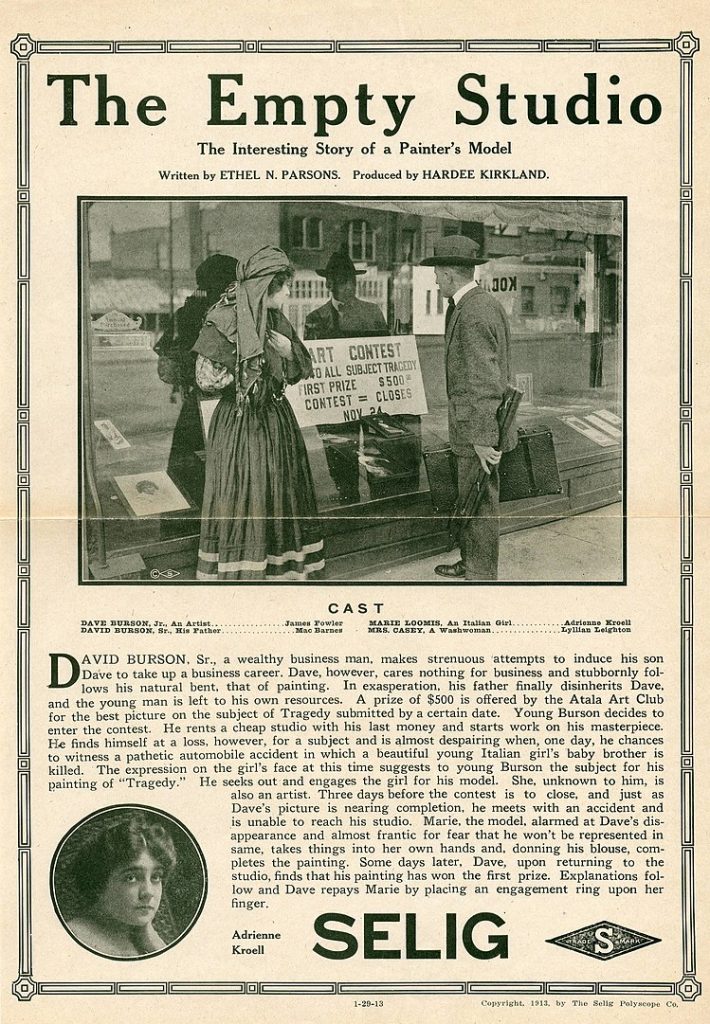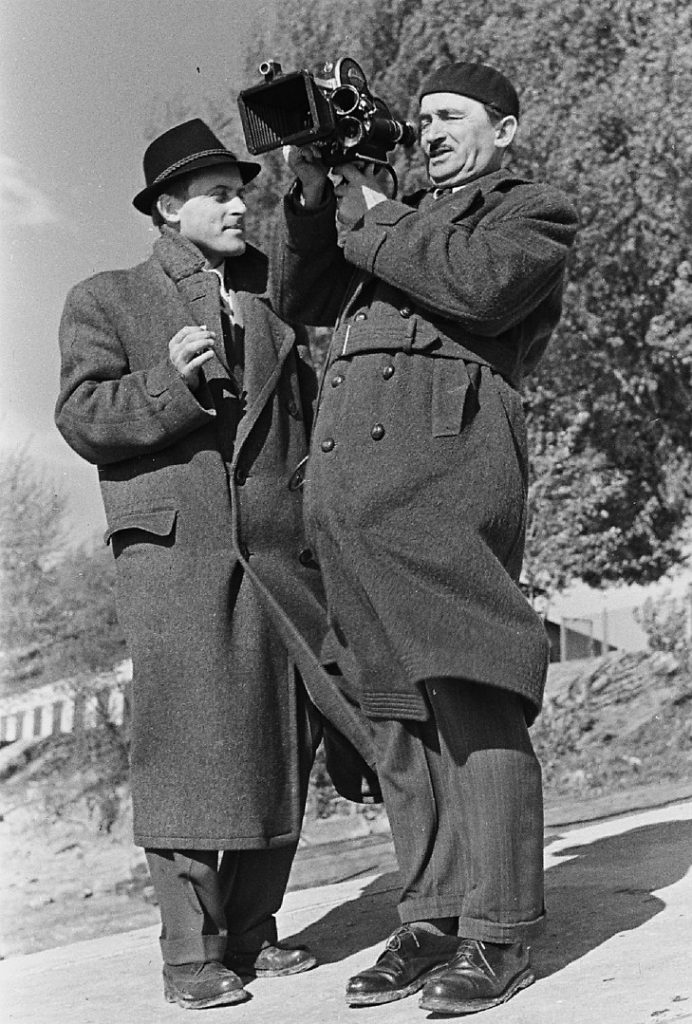
Paul O’Connor made a short and punchy video of his activities in the studio with the help of a professional filmmaker
An artist’s life is generally isolated at the best of times, and that is the way most would have it. Unless you’re Andy Warhol running The Factory and possibly pathologically in need of company at all hours, you require solitude to do your best work. So, for some this period of self-isolation is no hardship, especially for those relieved of teaching duties or other pesky obligations.
I’ve heard from artists who are delighted to have this unfettered time. But I’ve also heard from others who are nervous, anxious, and unable to focus. Or who are thinking that any studio work at this time is simply a frivolous indulgence.
If you find yourself abandoned by the muses right now, consider that there’s more to the artist’s life than the act of creation, especially if you’ve had to let go of studio assistants or haven’t had time to do the upkeep and housekeeping that gets your work out there.
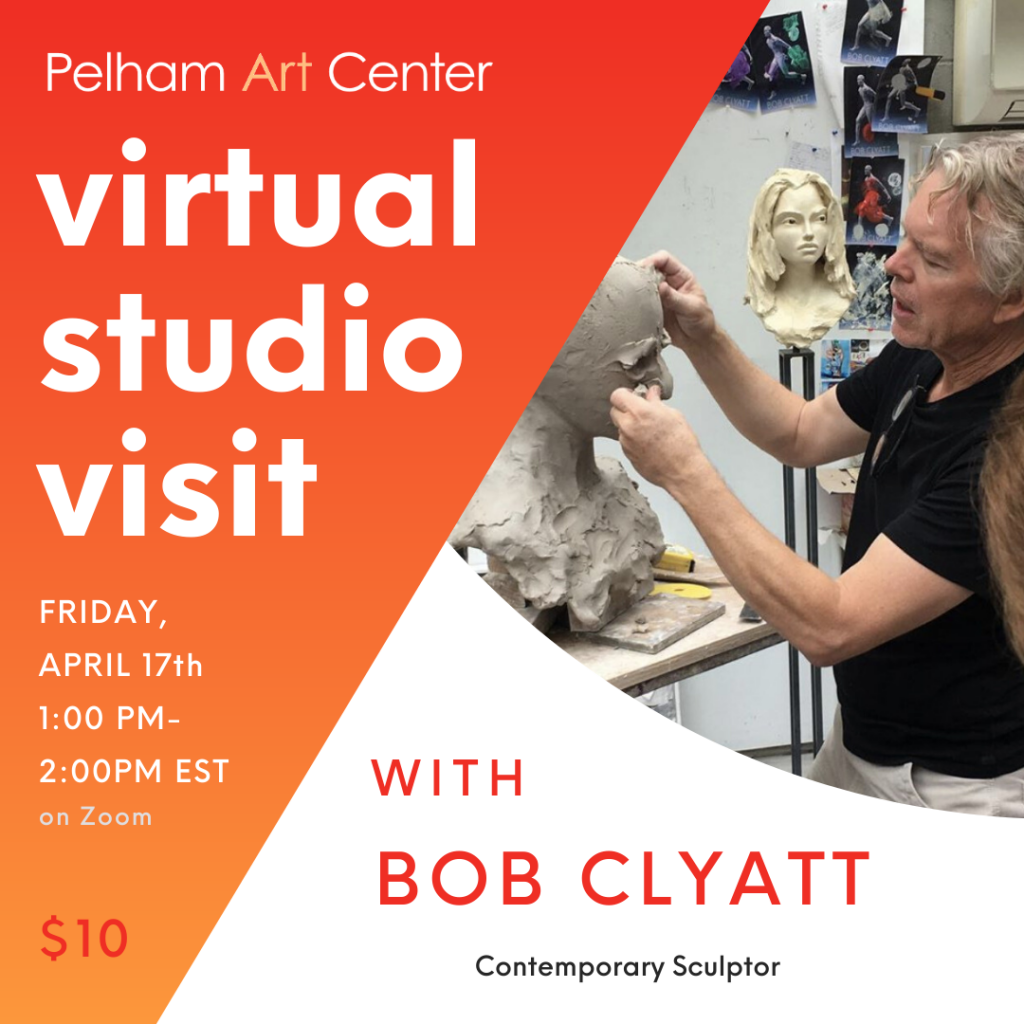
Bob Clyatt put together a “virtual studio visit” as a benefit for a local art center and offered demos of his casting process for about 20 “visitors”
We talked with Shannon Wilkinson, founder and president of Reputation Communications in New York, about some matters that could probably use your attention while you’re in aesthetic limbo. These are tasks that may be annoying at the best of times, but now is the perfect opportunity to take care of the back-end, but nonetheless important, aspects of being an artist.
Shannon Wilkinson: We are currently in a time of transition — in a “new normal.” When we move forward, it will not be back to the way things were. It will be a new phase for all of us.
One certainty is that everything is moving more online and more virtual. As an artist, your digital presence is you. And your work. So this is a good time to reevaluate and possibly reset how you are using digital tools and the internet to maximize your visibility.
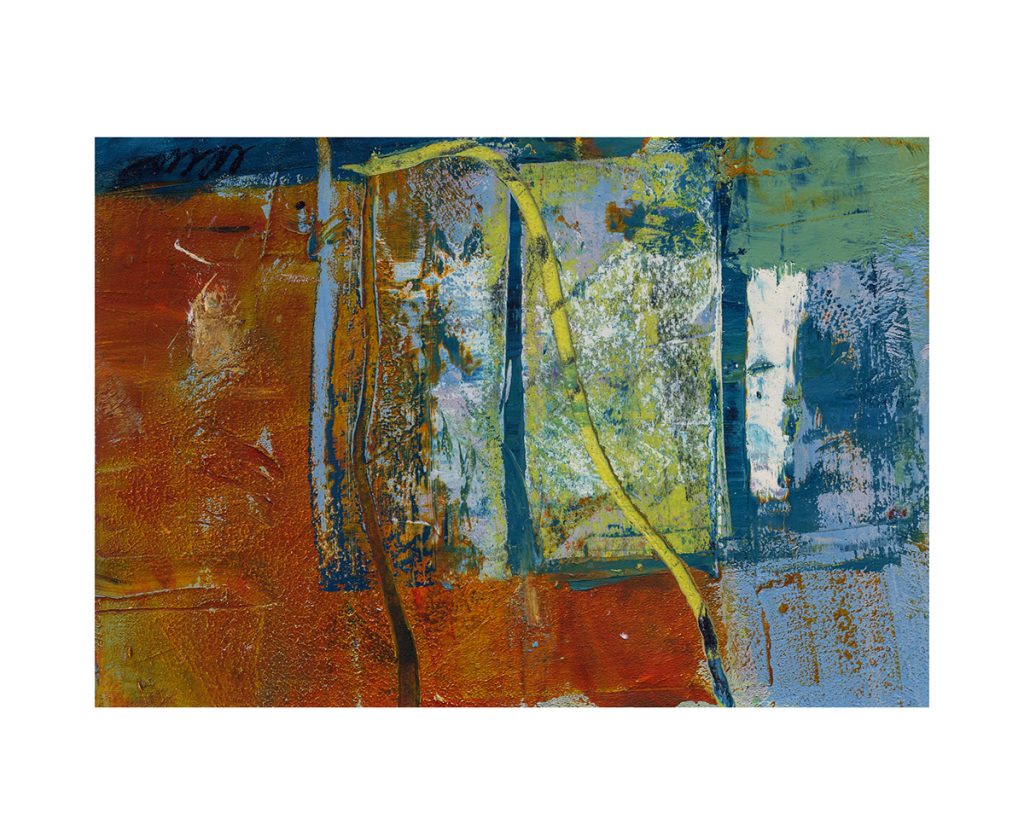
This work from Lisa Pressman’s “9 Day Series” is part of a sales endeavor to support other artists via the Instagram platform #artistsupportpledgeis; oil on canvas, 9 by 12 inches
The end goal of this exercise is: How can you thrive during and beyond this period? How can you step up rather than retreat?
Vasari21: Shannon, you’ve mentioned websites. And almost every artist has one (or should have one). What are some ideas for maintenance now?
SW: This is a good time to assess the age and effectiveness of your website. Is it on an up-to-date platform like Squarespace, which offers predesigned templates to showcase art and portfolios? If your site is over five years old, it may lack the technology to shine on multiple types of platforms – iPad and tablets as well as smartphones – or to host blogs or an online store where your work can be purchased directly.
A good checklist for evaluating your website is to determine:
Are your images large, front-and-center, meaning the dominant aspect of your home page and inside pages?
Is it cluttered, slow to navigate and dated? If so, that does not reflect well on your career. A sleek, well-designed, and current website projects success and invites the eye in.
Does it have a built-in mailing list sign-up tab that you can use to promote new work, exhibitions and use for e-Newsletters?
V21: What about social media? I’ve covered Instagram in several posts, but could this also be a good time to work with a professional who can help you build an audience?
SW: Instagram was created as a tool for sharing visuals. It is visually driven, free, and an excellent way to showcase your images while connecting to curators, galleries, and collectors.
This slowed-down pace of the world is an ideal time to learn the technology and see how other artists are using Instagram. You can drive traffic to your website by including links to it in your posts.
V21: With virtually all galleries closed, what are some ideas for expanding sales on your own?
SW: Explore the feasibility of sites like Artsy and Etsy (the latter especially if you want to sell).
Add an online store to your site and offer to donate a percentage of sales, or an in-kind work, to a local charity. Then promote that with a press release and an e-newsletter to all of your contacts.
People are staying home more now, and acquiring art and decorative objects is something that many continue to be interested in.
V21: Everyone now is doing online exhibitions, and we are all pretty numbed by the number of visuals available on the Internet, but I am seeing some clever videos and think that is a good way to go to sustain collector interest. Any thoughts?
Videos are the most popular type of content online right now. And when you set up a YouTube channel to showcase your videos, they rank very highly—typically on the first page of a Google search of your name.
Creating a series of short videos that start with a view of your studio and a brief introduction to your work is a way to start. Two minutes is enough to hold viewers’ attention. If you are working on a new series, show examples. You will need to experiment with good lighting sources, but there is lots of information online about how to do that. You can promote your videos on social media, if you are active on it, as well as in newsletters.
V21: What about newsletters?
SW: Newsletters—and single announcements with a single strong visual and short text—are an excellent way to stay top-of-mind with people who matter to you: collectors, galleries, journalists, friends, members of the community.
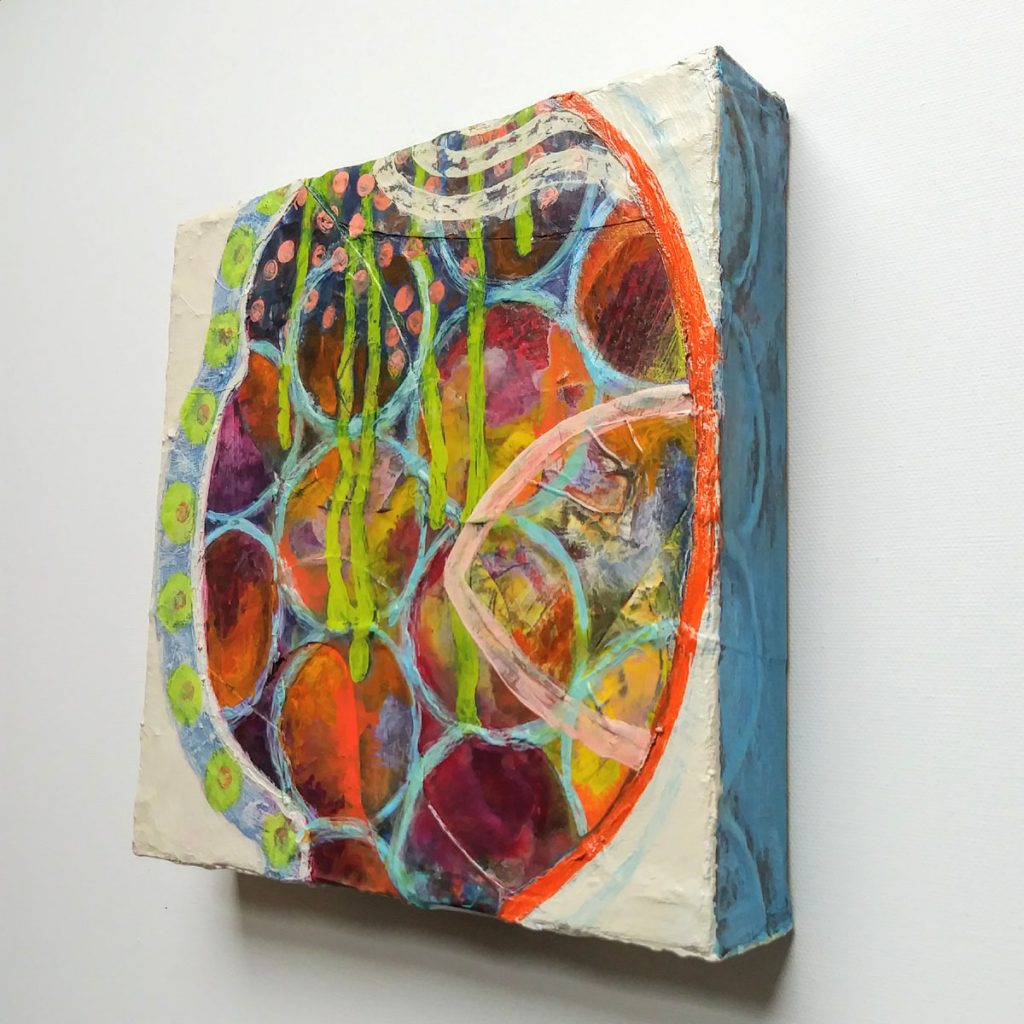
Christine Sauer’s Vessel (2016) is also for sale as part of the #artistsupport pledge on Instagram. The work is acrylic and collage on canvas, 8 by 8 by 1.5 inches
Platforms like MailChimp, which many consider the gold standard, have free versions but can upwards of $35 per month, depending on the size of your audience. All you need to do is upload a list of emails — essentially everyone on your list that you consider valuable. MailChimp and similar services have extensive training videos, and interns/assistants can help you set them up.
They also offer many templates, from sending out a simple message with a visual to a written text. Newsletters sent monthly or quarterly keep you visible, and if well crafted can result in a variety of opportunities.
Do not be put off by your lack of interest in technology or your preference to ignore marketing and spend time in your studio. Virtual assistants work by the hour, many at reasonable sums if you have a budget. College students often are highly proficient using platforms like Instagram and can manage them for you. Squarespace is around $145 annually; you just need an IT consultant or someone willing to learn the platform to build the website. Ask your network for names!
The “music” has paused, but it will restart. And when it does, taking some time for a reset and refresh may put you in good stead at that time. Image matters.
Shannon Wilkinson began her career in the public affairs office of the Guggenheim Museum, then spent over a decade as the founder of Cultural Communications, a PR firm for arts and culture. In 2009, recognizing the rise of the digital era, she launched Reputation Communications, which specializes in online reputation management for a broad range of corporate, finance and other clients, including those in the arts.
Top: Rembrandt von Rijn, The Artist in His Studio (ca. 1626), oil on panel, 9.7 by 12.4 inches
